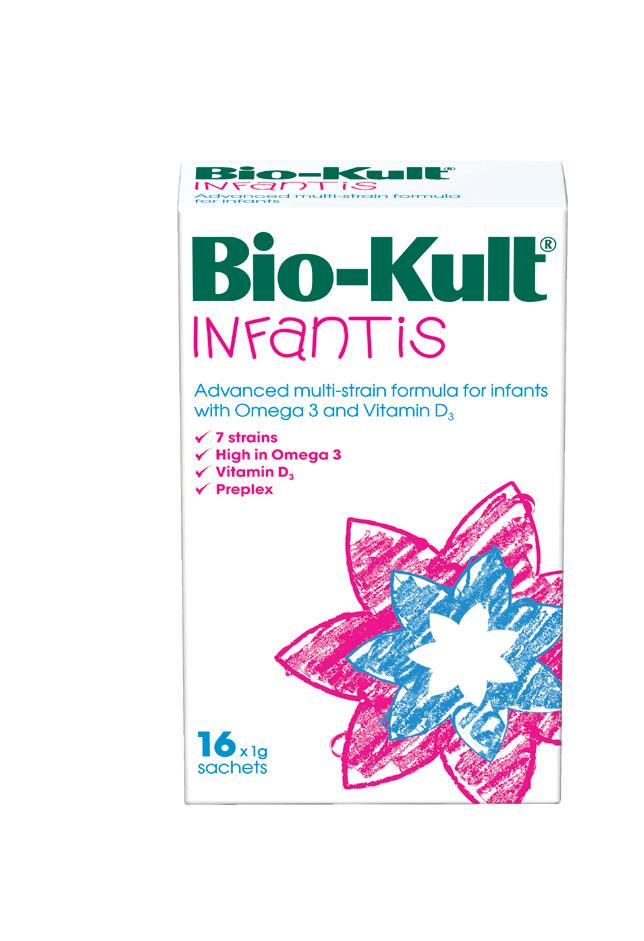
8 minute read
Pre-school food provision
Judy more dietitian & registered nutritionist, member of the infant & toddler forum (itf)
melanie pilcher policy & Standards manager, pre-school learning alliance, registered Charity (pSla)
Advertisement
Judy more is a Paediatric dietitian and registered nutritionist who specialises in children’s nutrition. She is a member of the itf. She has worked in the nhS but now runs her own private clinics.
melanie has nearly 25 years’ experience in early years. She writes articles and resources to support early years’ practitioners and represents the work of the PSlA as a speaker at conferences and seminars.
the role for early years’ providers in encouraging healthy eating habits for life.
The UK obesity crisis has beginnings early in life. The latest figures from the National Child Measuring Programme reported that 22.5% children in Reception year (four- to five-year-olds) in England in 2013-2014 were overweight or obese.1 The figures rise to 33% for Year 6 children and probably involve the same children who were used in a UK study that found that overweight children carry their excess weight gained by five years through to at least nine years of age.2 The causes of obesity are multifactorial, but preventing excess energy intakes in the early years is one key way to tackle obesity.
Food provision within early years’ settings has a significant role to play. The number of early years’ providers, including childminders, nurseries and children’s centres, totals 78,286, providing care to around 1.3 million under-fives.3 Some children eat all three meals on five days in these settings and the food provided is key in developing the food preferences and eating habits of these children. Positive food preferences and eating habits developed in early life can help shape the habits that older children adopt when they start to make their own food choices. This, in turn, can influence their risk of obesity, heart disease, diabetes and cancer later in life.
varying StandardS and guidanCe on nutrition within SettingS Although there are guidelines from various agencies, there are no statutory requirements on meals, drinks and snacks provided in these settings. Decisions regarding the nutrition of these children are usually made by the early years’ managers and in-house cooks or chefs, although some providers outsource their catering service.
The minimal training on nutrition for early years’ practitioners, along with the lack of statutory guidance standards, means that the quality of nutritional provision can vary. Some chains of early years’ settings, such as the PSLA, have developed their own in-house guidance with support from experts, while other groups use online or hard copy guidance from providers including: • Infant & Toddler Forum (ITF) • British Nutrition Foundation (BNF) • Caroline Walker Trust (CWT) • First Steps Nutrition • Local Authority Public Health Services • Private consultants and nutritionists • The Children’s Food Trust
Some early years’ settings develop menus in-house without recourse to guidance or standards. There have been many calls to have Ofsted inspect food provision in early years’ settings as well as in schools, but this has so far not been added to inspection criteria. The All Party Parliamentary Group on a Fit and Healthy Childhood has recently called for this to be part of the Government’s National Obesity Strategy which is currently being developed.4
Despite the lack of statutory guidance and inspection, the PSLA believes that attitudes to food provision in early years’ settings continue to improve, with many recognising the need to budget for and provide fresh food. There is a marked awareness about what constitutes a healthy diet for very young children, which has increased in the last few
years as new resources have become available. However, these need to be accessible and easy to interpret by managers, chefs and cooks within the early years’ settings, as well as parents. Consistent easy-to-follow guidance is most useful.
ChallengeS of food proviSion in early yearS SettingS The PSLA highlights the following ongoing challenges: • The costs in providing healthy foods, versus what parents are willing to pay. They report the average spend is between less than £1 and over £3 per child per day.5 • Perceived training needs, particularly in how to support parents and carers in their understanding of good nutrition.5 For example, while some providers employ a chef, some do not have that option and nominate a member of staff to provide the food and snacks for the day. • Food storage - fresh foods need cold storage, which is often difficult in smaller nurseries, where kitchens are very small. • Poor parental understanding of nutrition - the PSLA understands the need to work together with parents. It provides online resources and publications that are suitable for parents as well as early years’ providers to help them understand what constitutes a healthy meal. There is a strong focus on supporting and educating parents on healthy attitudes to food and eating.
managing food allergieS A key challenge for early years’ settings identified by the PSLA is parental reporting of food preferences as food allergies or intolerances. The PSLA’s advice is to manage this by ensuring that key persons in the early years’ setting gain accurate information from parents from the outset, asking if a clinical diagnosis has been made, the symptoms a child can experience and any medical devices, such as adrenaline autoinjection pens, that must be used to alleviate symptoms. This becomes part of a healthcare plan for that child, ensuring that their needs are met at all times, which helps to put a parents’ minds at ease. In some instances, this is the first time parents will have left their children in the
Look after your child’s immune system* with Bio-Kult Infantis!
Bio-Kult Infantis is a research-based, multi-strain formula for infants with Omega 3 and Vitamin D3.
*Vitamin D3 contributes to the normal function of the immune system.
Ask your wholesaler for more information, or contact Bio-Kult.

care of someone else, so managers need to be very aware of parents’ anxieties. The PSLA sees a need for better information for both practitioners and parents about what the differences are between a child’s intolerance and preference for foods over a medically diagnosed allergy.
nutritional needS for under-fiveS As with older children and adults, under-fives need a diet based on the balance of the five food groups and a vitamin D supplement. The iron intakes of under-fives are more critical as iron deficiency anaemia (IDA) is still common in this age group and affects their growth and development.6 The combination of the five food groups is, therefore, more important with those who over consume cows’ milk as they are the most at risk of IDA.7 Within early years’ settings, vegetarians may be most at risk, as not all settings provide iron-rich alternatives to meat and oily fish, often providing excess cheese rather than dishes based on eggs or pulses in combination with a high vitamin C food.
There is varying guidance on portion sizes for this age group, but guidance from the ITF and BNF are evidence based and were developed by More and Emmett to meet nutrient requirements within recommended energy intakes.8
improving nurSery food proviSion through training and reSourCeS The PSLA in association with the BNF and Danone are trying to fill gaps in this area by creating new early years’ nutritionist roles, using external respected resources to guide their training. PSLA members currently use BNF and ITF ‘Ten Steps for Healthy Toddlers’ (see Table 3 page 29) portion sizes and the meal planning resources, among others. They are evidence based and targeted at under-fives. Many other resources are for school-age children who have different requirements.
aSSeSSing the effeCtiveneSS of guidanCe Despite the number of guidance documents, few have been assessed for their effectiveness. One resource that has been is ‘Ten Steps for Healthy Toddlers’ launched by the ITF in 2010. The ‘Ten Steps’ guide parents and carers on how best to provide a balanced diet with appropriate portion sizes from each food group and how to best manage mealtimes. PSLA practitioners were invited to complete a baseline survey when the project was initiated in 2011 and six months later a follow-up survey was issued to capture their experiences in implementing the ‘Ten Steps’; 32 managers of PSLA settings completed the baseline survey and 23 setting managers completed the follow-up survey. The survey found significant improvements in behaviours around food and feeding and also more confidence among the early years’ practitioners in dealing with allergies and issues around food.
ConCluSion The importance of investing in guidance and training on healthy food provision in the early years of life is paramount as the foods that under-fives are offered are the foods that they become familiar with and learn to like. This shapes their food and drink preferences which can affect their long-term health. Early years settings can and do play a vital role in educating children in their care and their parents on healthy lifestyles habits, but without statutory guidance, standards are variable.
For more information: ITF and resources for early years’ professionals: www.infantandtoddlerforum.org; PSLA: www.pre-school.org.uk
references 1 Health and Social Care Information Centre, National Child Measurement Programme 2013-14 (2014) 2 Gardner DS, Hosking J, Metcalf bS, Jeffery aN, Voss LD, wilkin TJ. Contribution of early weight gain to childhood overweight and metabolic health: a longitudinal study (earlybird 36). Pediatrics. 2009 Jan; 123(1): e67-73. doi: 10.1542/peds 2008-1292 3 Ofsted, Department of education, early Years annual report: 2012/13 (September 2014) 4 The all-Party Parliamentary Group on a Fit and Healthy Childhood, Food in School and the Teaching of Food (2015) 5 Pre-school Learning alliance survey of early years’ practitioners and food provision (internally published) (2015) 6 eussen S, alles M, Uijterschout L, brus F, van der Horst-Graat J. Iron intake and status of children aged 6-36 months in europe: a systematic review. ann Nutr Metab. 2015; 66(2-3): 80-92. doi: 10.1159/000371357. epub 2015 Jan 21 7 Parkin PC, DeGroot J, Maguire JL, birken CS, Zlotkin S. Severe iron-deficiency anaemia and feeding practices in young children. Public Health Nutr. 2015 Jun 1:1-7 [epub ahead of print] 8 More Ja, emmett PM (2015). evidenced-based, practical food portion sizes for preschool children and how they fit into a well-balanced, nutritionally adequate diet. Journal of Human Nutrition and Dietetics, apr; 28(2): 135-54. doi: 10.1111/jhn.12228. epub 2014 Mar 24








